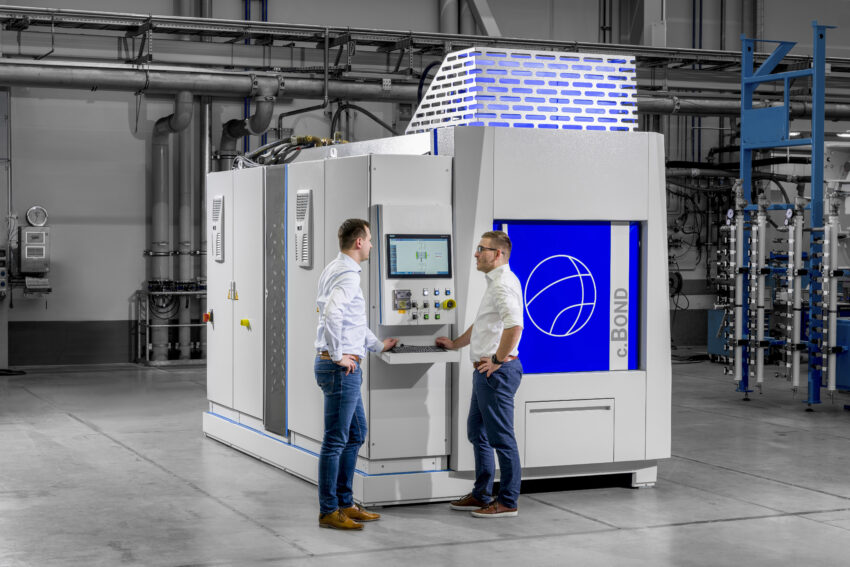Contract manufacturers and design engineers in the aerospace, semiconductor, high-power electronics, and energy industries have been turning to diffusion bonded metals to produce new cutting-edge innovations.
Diffusion bonding is an essential joining method used to achieve a high-purity interface when two similar or dissimilar metals require superior structural integrity, and a traditional brazing approach fails to yield quality results. The process involves applying high temperature and pressure to metals mated together in a hot press, which causes the atoms on solid metallic surfaces to intersperse and bond.
Today, much of the innovation occurring in either in high-demand or high-quality industrial sectors involves aluminum as one or more of the layers of metals that are bonded. Aluminum, and its broad family of alloys, is prized as a lightweight metal with strong structural integrity, high electrical and thermal conductivity, corrosion resistance, and a malleability that makes it easy to shape.
Unfortunately, the characteristics of aluminum present a challenge for the traditional diffusion bonding process, which involves the application of radiant heat into the metal layers while in a vacuum furnace.
“Aluminum’s high reflectivity poses a challenge in traditional diffusion bonding. It’s like trying to heat a mirror with a spotlight – the energy is reflected away instead of being absorbed into the material [using the traditional diffusion bonding process],” says Horst-Gunter Leng, Product Manager, PVA TePla, a global manufacturer of industrial furnaces and PulsPlasma nitriding systems.
To overcome the existing challenges of bonding aluminum, PVA TePla and its partner initiated an extensive development program and came up with an innovative solution: integrating heating elements directly into the press platens, explains Horst-Gunter Leng. “This approach speeds up the bonding process, and significantly enhances efficiency by directly transferring heat to the aluminum components.”
The culmination of extensive research and development is the c.BOND machine. This features a unique combination of direct conduction heating through the top and bottom platens which are in contact with the assembly. The innovative design ensures bi-directional homogenous heating and more precise temperature at the bonding interface where it is required.
The c.BOND machine utilizes a hot-press tool with advanced software and feedback sensors to achieve micrometer-precise pressure control across the entire component surface. This ensures uniform bonding over large areas. Furthermore, the system allows for selective heating of specific areas, preventing unnecessary heat exposure to other parts of the component. The high-vacuum atmosphere within the chamber eliminates contamination and prevents voids in the bonded joint.
“With the [c.BOND] the time to heat the part to the ideal temperature for bonding is cut in half compared to traditional radiant heating. With less processing time required, the energy requirements are reduced by up to 30% as well,” says Horst-Gunter Leng. He notes that multilayer stacking is also possible, which can further increase productivity.
The c.BOND technology demonstrates significant quality improvement of bonded aluminum components. The technology improves temperature homogenity in the load by 70%, which enhances bonding across the the entire surface. The technology also improves the parallelism of parts by 50%, which enhances the accuracy of geometric dimensions, tolerances, and product specifications.
According to Horst-Gunter Leng, the c.BOND furnace technology by PVA TePla is commercially available today for high volume production.
For more information, contact PVA TePla America at 951-371-2500 or 800-527-5667 or visit www.pvateplaamerica.com.

